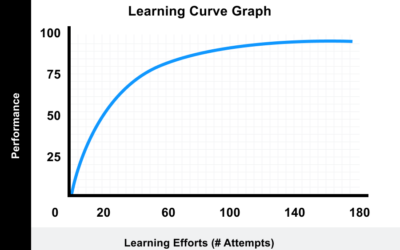If e-commerce startups continue to expand, particularly in the financial sector, they are considered promising and healthy. The Gross Merchandise Value (GMV) metric is frequently used to determine the financial growth of an e-commerce startup, along with other metrics. How is the Gross Merchandise Value (GMV) calculated? Check out the explanation below!
What is GMV?
Gross Merchandise Value (GMV), also known as Gross Merchandise Volume, is the total value of merchandise sold via a website or app during a specific time period, typically measured quarterly or annually. The GMV is determined prior to deducting accrued expenses. The accrued fee includes advertising/marketing, shipping, discounts, and returns expenses.
GMV is frequently used to evaluate the health of an e-commerce company. Comparing GMV from one period to the next enables management and analysts to evaluate the financial health of the company, such as comparing the current quarter’s value to the previous quarter’s value. However, GMV does not reflect the company’s revenue because a portion of the revenue is paid to the original seller.
Most e-commerce startups utilize metrics rather than sales or revenue data. Using GMV as a stand-alone reference or as a substitute for other metrics is widely regarded as ineffective. Typically, e-commerce companies combine GMV with other metrics to better comprehend their operations and growth.
Also read: What is Return On Investment (ROI), and How to Calculate It
How to Calculate GMV

What is Gross Merchandise Value (GMV) (source:pexels)
There are a variety of methods for calculating Gross Merchandise Volume. The simplest and most frequently employed formula is as follows:
GMV = Price multiplied by quantity Sold
According to the calculation above, GMV can also be viewed as a representation of gross revenue. For instance, if a startup sells 15 computers at a unit price of IDR 10 million, the GMV will be IDR 150 million.
Also read: What is Forecasting Methods and Their Benefits for Business
The Positive and Negative Aspects of GMV
The Positive Aspects
Due to the fact that companies may not be the producers of the goods they sell, measuring the gross value of sales provides insight into the performance of the company. This is remarkably accurate in the customer-to-customer marketplace, where the company’s role is to connect buyers and sellers as a neutral third party without taking part in either transaction.
GMV also provides value to retailers in the consignment industry, as they never buy the inventory outright. In general, they are never the true owners of the item, as the person or entity that placed it on consignment can return and claim it if they so choose.
Also read: Merger Definition, Types, and Reasons for Companies’ Pursuit
The Negative Aspects
Gross Merchandise Value can assist a business in determining the number of items sold and the estimated revenue, but it does not reveal the actual value of the product or the business’s profitability. This is because the costs and expenses associated with the item’s production, manufacturing, and advertising are not considered.
For instance, if the company’s GMV in June was 500 million Indonesian Rupiah, the majority of the funds would go to the individual who sold it. The company’s actual revenue is the site’s charges fee. If the cost is 2%, then the company’s actual revenue is IDR 500 million multiplied by 2%, which equals IDR 10 million. Returns and discounts are not included in the GMV calculation, so the company’s net profit should not be deducted from its total sales because it is not accurately reflected.
GMV can be used as a raw estimate of a company’s earnings and as a predictor or metric for growth. To obtain the most accurate and comprehensive understanding of a company’s financial health and growth potential, we recommend that companies use GMV in conjunction with other financial metrics.
Also read; What is a Company’s IPO, Objectives, and It’s Terms
Is It Necessary to Calculate GMV?

What is Gross Merchandise Value (GMV) (source:pexels)
The company must calculate the GMV because it serves an essential function in determining the total value of the gross sales. When a company uses this metric for comparison, it typically seeks to increase it, whether year over year or quarter over quarter. If the number increases, it indicates that the company is selling more products or higher-priced products, both of which are beneficial to its profits.
However, there are additional financial metrics that can be used to determine the performance of an e-commerce company:
-
- 1. Net Merchandise Value (NMV) is the profit after deducting all costs and expenses from GMV over a specific time period. This is a more realistic perspective on the performance, taking into account the fee, refund, and other factors.NMV = GMV – All Fees (marketing, refunds, gateway payment)
- 2. Customer Acquisition Cost (CAC) is calculated by dividing the costs incurred to acquire customers (including software costs, marketing team salaries, etc.) by the total number of customers acquired during the spending period.CAC = Total Marketing Expenditure / New Customers AcquiredThis is an important metric because it measures the effectiveness of the company’s marketing and advertising expenditures in acquiring new customers.
- 3. Customer Lifetime Value (CLV) is the estimation of how much a customer will spend over the course of their relationship with a business. To calculate the CLV, the company must first define its LTV:LTV = AOV x Number of transactions x Retention periodCLV = LTV x Profit Margin
The CLV reveals to the business how well it retains customers and how much they enjoy the product or service. The greater this figure, the larger the profit. If it’s low, the company needs to work on its customer retention strategy, or something about the product or service is falling short of customer expectations.
This concludes the discussion on Gross Product Value (GMV). Hopefully, after reading this, you will have a better understanding of GMV.



